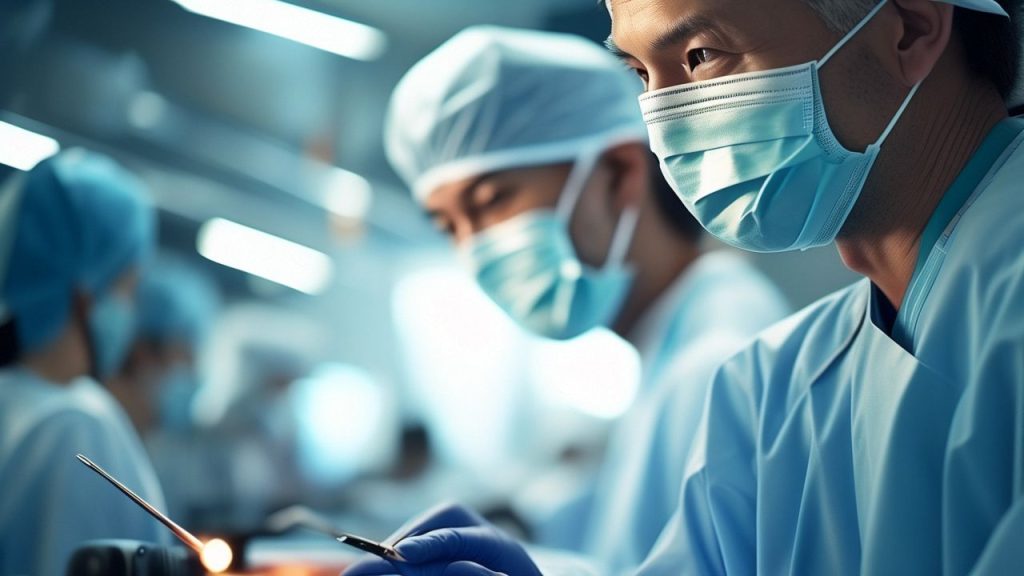The target audience for cosmetic surgery services mainly consists of individuals who seek to enhance their physical appearance. The primary goal of cosmetic surgery is to fulfill the psychological need for self-improvement. Cosmetic surgeons should possess a certain level of knowledge in psychology. It is crucial to have a thorough understanding of the motivations of individuals seeking cosmetic procedures before performing the surgery, as it plays a vital role in ensuring that the desired outcomes of the procedure are achieved. Generally, individuals seeking cosmetic surgery exhibit the following characteristics:

1.General Characteristics of Cosmetic Surgery Services:
(1) Gender:
“Men and women differ,” and this holds true in the field of cosmetic surgery. The majority of individuals seeking cosmetic surgery are women. Women tend to prioritize the enhancement of their appearance and aspire to achieve or maintain a youthful and attractive look and figure through cosmetic surgery. On the other hand, men often focus on shaping their image by improving their social status. There are also differences in aesthetic preferences between men and women.
Men primarily seek to correct deformities and pursue a more handsome appearance, while women aim to enhance their beauty and pursue a more glamorous and attractive look. Even for the same type of cosmetic procedure, the preferences and expectations of men and women may vary.
(2) Age Characteristics:
Different age groups have distinct characteristics when it comes to cosmetic surgery. It is generally believed that different age groups have varying perceptions and pursuits of beauty, leading to different choices of surgical procedures.

- Children and Adolescents: For children with certain congenital or acquired deformities, the pre-school age is generally considered the optimal time for cosmetic surgery as it promotes their physical and psychological development. Early surgery is often necessary for certain deformities when medical facilities are well-established. However, caution should be exercised when considering cosmetic surgery during adolescence due to the complex and volatile psychological state of teenagers.
- Young Adults: Around the age of 20, young adults are at a crucial stage in their lives, such as pursuing education, employment, and romantic relationships. The most common cosmetic procedures during this stage are double eyelid surgery and rhinoplasty. Generally, individuals in this age group have a positive mindset and high satisfaction rates after surgery.
- Middle-aged Adults: This group primarily consists of middle-aged women who may be troubled by love or marriage issues. They often hope to achieve or maintain a beautiful appearance and figure through cosmetic surgery, solidifying their social status and meeting the needs of their family or marriage. The most common procedures for this age group include eyebrow and eyelid surgeries, rhinoplasty, breast augmentation, and body contouring. They represent the largest portion of the target audience for cosmetic surgery services but are also known to be highly selective.
- Middle-aged and Elderly: This group often seeks surgery due to skin laxity and excess body weight. The most common procedures for this age group include facial wrinkle reduction, upper and lower eyelid surgeries, and weight loss procedures. While individuals in this age group generally have a positive mindset, they may have reduced tolerance for surgery, so it is important to avoid excessively large or complex procedures.
(3) Occupational Characteristics:
Occupational image is not only a focus of social attention but also a key consideration in the field of cosmetic surgery. Professions such as actors, PR personnel, flight attendants, marketing professionals, and service industry workers form a significant group that often seeks cosmetic surgical procedures due to the demands of their occupations. The most commonly performed surgeries for these professionals include double eyelid surgery, rhinoplasty, and breast augmentation. On the other hand, individuals in professions such as the military or those working in high-temperature environments tend to opt for scar removal and tattoo removal procedures.
(4) Ethnic Characteristics:
Different ethnic groups exhibit varying preferences when it comes to cosmetic surgery. Among Asian individuals, double eyelid surgery and rhinoplasty are particularly popular choices. In contrast, individuals of European and American descent tend to favor wrinkle reduction procedures. People of color may prioritize scar reduction due to its impact on their appearance, while individuals of Caucasian descent are generally less concerned about visible scars. Individuals of Asian descent fall somewhere in between, considering both scar reduction and other cosmetic procedures.

2.Psychological Characteristics of Cosmetic Surgery Services:
(1)Beauty Psychology:
The psychology of beauty exhibits both universality and diversity. From a psychological standpoint, the pursuit of beauty is essentially a social psychological need. Regardless of gender, race, belief, or status, the desire for beauty and the pursuit of aesthetics are enduring themes. The pursuit of beauty is a reflection of human instinct, serving as a symbol of social development and a sign of progress in human civilization. As members of society, individuals display varying psychological attitudes towards beauty across different eras and social classes.
Within the universal pursuit of beauty, there also exists diversity among groups and individuals. This diversity encompasses differences in hierarchical needs and aesthetic preferences. Influenced by various factors such as social norms, ethnicity, customs, cultural upbringing, profession, gender, age, era, experiences, and background, there are significant differences in both the quality and quantity of individuals’ beauty needs and their levels of aesthetic appreciation.
(2)Psychological Impact on Individuals with Defects or Deformities:
Defects or deformities not only have adverse effects on individuals’ physical functions but also significantly impact their psychological well-being. The presence of defects or deformities can have an undeniable negative influence on the formation of one’s personality, especially during childhood or adolescence, where the effects can be more pronounced. Prolonged existence of defects or deformities can even lead to psychological distortions in one’s character. Generally, the severity of defects or deformities correlates positively with psychological changes in individuals. However, this is not always the case; even minor facial defects can cause significant psychological trauma to individuals. The so-called “dysmorphophobia” in clinical terms often results from the psychological effects of exaggerating one’s facial or bodily defects, stemming from mental trauma.
(3)Types:
According to psychological and clinical analysis, seekers of beauty are generally classified into four types.
- Normal Thinking Type: These seekers have a clear idea of improving their appearance through surgery. They possess a correct aesthetic sense, have selected a medical institution and surgeon, and understand the potential outcomes and risks. Actively engaged in the process, a successful cosmetic surgery can boost their confidence and courage in life, making them ideal candidates for such procedures.
- Exaggerated Defect Type: This group tends to magnify their defects, hold unrealistic expectations for surgery, and strongly desire beauty. They push doctors for surgery and often find fault with the results, leading to potential dissatisfaction or disputes. Clear communication about the surgery’s pros and cons, along with psychological therapy, is crucial before proceeding with surgery to avoid complications.
- Psychological Disorder Type: Seekers in this category experience psychological abnormalities due to perceived beauty defects. They can be divided into two subtypes:
- (1) Inferiority Complex: Individuals with visible defects, such as deformities, may benefit from cosmetic surgery to improve self-confidence and quality of life.
- (2) Frustration Complex: Those attributing life setbacks to appearance defects may seek surgery for compensation, requiring careful consideration before proceeding.
- Psychopathic Type: Seekers in this group demand surgery for minor or non-existent defects, insisting on personalized procedures. Success may offer temporary satisfaction, while failure could lead to psychiatric issues. With a tendency for hysteria or mental illness, these individuals are not suitable candidates for cosmetic surgery.